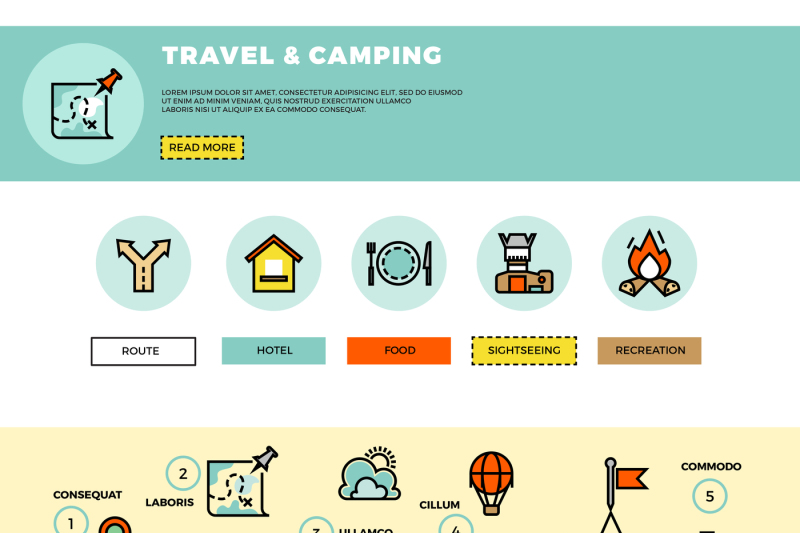Online Camping Tents Company Success Can Be Achieved When You Sell Camping Tents
Online Camping Tents Company Success Can Be Achieved When You Sell Camping Tents
Blog Article
Does Your Backpacking Tent Required a Footprint?
If you camp on a regular basis in areas with rocks or sharp downed branches or merely dislike storing a damp, sloppy camping tent, then an impact is most definitely worth thinking about. Impacts are likewise relatively economical compared to a brand-new tent.
Where can I go glamping in the US?
Several tent makers offer their very own certain footprints, which are cut to the exact dimension of the camping tent floor. However, you can make one on your own with a light-weight material like polycryo or tyvek.
Weather
Whether or not you require a footprint really depends on the problems you'll be camping in. If you're backpacking in an area where the ground is normally wet (it's virtually unpreventable), a camping tent footprint can be a valuable enhancement to your set, as it will certainly avoid your camping tent flooring from ending up being soggy.
Nonetheless, if the impact is as well huge it can serve as a wetness trap and potentially permit water to swimming pool under your camping tent. This can be prevented by ensuring the impact is reduced a little bit smaller sized than your tent on all sides.
Usually speaking, it's best to obtain an impact from the same supplier as your outdoor tents to make sure an exact fit. They additionally have a tendency to be made from thicker, much more durable products than DIY alternatives. They can be costly for something whose sole function is to protect the ground beneath your tent, yet it can be a worthwhile financial investment if you care about the durability of your equipment.
Terrain
Lots of quality outdoors tents can work well without an impact, particularly those that have bath tub floors constructed from long lasting materials. Nonetheless, the terrain you trek on can have a significant effect on just how rapidly your outdoor tents floor breaks. Granite slabs, sandstone and other rugged surface areas wear with the bottom of your camping tent faster than grassy fields or forest floorings.
An impact or ground cloth helps expand the life of your tent by functioning as an obstacle between the ground and the sewn-in groundsheet of your camping tent, says REI senior sales professional Elizabeth Nguyen. It also safeguards the outdoor tents from abrasive aspects like sharp twigs and jagged rocks that might puncture or tear the sewn-in floor. When picking a footprint for your outdoor tents, it is essential to guarantee it's slightly smaller sized than the tent on all sides. This stops water from pooling between the tent and impact during a rainstorm, which might seep into your outdoor tents. The most effective choice for a footprint is to buy one developed for your details camping tent, which will certainly ensure a tight fit.
Camping Tents with Lower Deniers and Water-proof Ratings
Whether you're a casual backpacker or a hardcore adventurer, the toughness degree of your outdoor tents is a vital consideration. Tents made to be ultralight, approaching minimalist, frequently trade off some level of toughness in the material and materials made use of.
One material spec you'll come across is denier, which describes the weight in grams of a 9,000-meter length of yarn that composes the outdoor tents's canopy, rainfly, and/or floor. A higher denier specification symbolizes extra rugged materials, while reduced numbers show lighter and less durable materials.
Other specs to consider consist of floor measurements, vestibule size, and indoor pockets. The former reflects the general square-footage that can be made use of for comfortable room, while the latter can play a role in storage space by offering a location to stow away gear overnight and in bad weather condition. Air flow is also a vital element; as you breathe out wetness during sleep, it needs to get away, or condensation might build up inside. Features such as mesh windows and panels and flexible rainfly doors aid raise air flow and avoid home tents this from occurring.
The Cost
The cost of a camping tent can influence its efficiency, and it is additionally vital to take into consideration just how much you can manage to invest. Backpackers looking for a lightweight shelter ought to aim for a tent with a livability rating of at least two celebrities, and when possible, 3 or more.
Livability refers to how roomy a tent really feels, with clearance and flooring measurements playing a big role. Historically, backpacking tents made use of outstanding sloped wall surfaces and very little space to conserve weight, yet contemporary products allow designers to give even more comfort while keeping weight reduced.
Storage space is another factor to take into consideration, with vestibules and a quick-pitching style helping reduce arrangement time. Furthermore, the type of textile finish and exactly how the camping tent is stored can influence durability. For instance, a PU covering that breaks down more quickly when damp, or undergoes duplicated cycles of stowing and un-stowing, can dramatically shorten the life expectancy of a camping tent. Similarly, making use of a customized footprint as opposed to stuffing a camping tent in a careless fashion will certainly also extend its life expectancy.
How much wind can a tent take?
